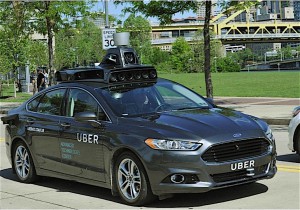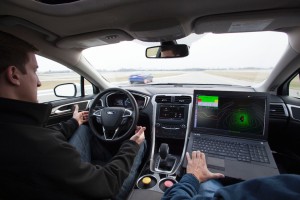
The development of autonomous vehicles is dependent upon new technology coming to the auto industry.
The ongoing push for autonomous vehicles has largely centered on convenience and safety; however, a new study shows there may a third, very compelling reason: billions of dollars.
According to Global Positioning Specialists, driverless technologies represent a savings of $306 billion annually in lost gross domestic product — just in the United States.
Federal safety officials have been campaigning for past several years to expand the use of self-driving technology with a goal of eliminating traffic fatalities.
The National Highway Traffic Safety Administration not only released the first federal guidelines for autonomous vehicles but also announced preliminary rules that will soon have cars “talking” to one another, sharing their location, speed and direction.
“It has been estimated that up to 80% of non-impaired collisions could be avoided or mitigated to reduce injuries” with the widespread use of so-called vehicle-to-vehicle, or V2Vm technology, said U.S. Transportation Secretary Anthony Foxx, who also said the Department of Transportation will now consider the possibility of requiring V2V systems on commercial trucks, as well.
(Autonomous vehicles one 2016’s top stories. For more, Click Here.)
In the U.S. about $340 billion each year is paid out due to accidents — which could be prevented by using autonomous vehicles. GPS research reveals that no country on Earth would benefit more – financially – from autonomous vehicles than the U.S.
GPS combined the percentage of GDP lost to traffic accidents with the total GDP of each country alongside the percentage that driverless tech could reduce traffic accidents to calculate both the total GDP lost to traffic accidents each year and the amount of GDP that driverless technology could save.
“This research has two facets to it, on the one hand there is the amount of money which we spend on accidents each year, which in itself is interesting,” said Lucile Michaut, head of GPS. “Then you realize how many of these accidents could be avoided with new driverless technology.
“Governments will never spend on investing in things like this unless there is concrete evidence, but here we have proved there are strong economic reasons to invest in driverless technology, as well as the obvious improvement to public safety.”
(Click Here to see why Toyota will slow to market with autonomous vehicles.)
The research firm created a list of the 20 countries that would benefit the most financially from driverless technology, and the top five were:
- U.S. – $306 billion
- India – $56 billion
- Japan – $47 billion
- Germany – $36 billion
- Russia – $31 billion
The rest of the list includes: Italy, Canada, UK, Australia, Indonesia, Iran, Mexico, South Africa, France, Brazil, Netherlands, Nigeria, South Korea, Austria and Spain.
While the U.S. loses the most GDP to traffic accidents, South Africa has the highest percentage of GDP lost to traffic accidents in the world (7.8%), but because of a much lower GDP, South Africa ranked 13th, where driverless tech could have reduced lost GDP by more than $21 billion.
(To see more about the fed’s five-year phase-in plan for V2V technology, Click Here.)
The UK and Australia, ranking eighth and ninth respectively, both lose more than $28 billion GDP to traffic accidents each year. Driverless cars could save the UK and Australia more than $25 billion each year.

